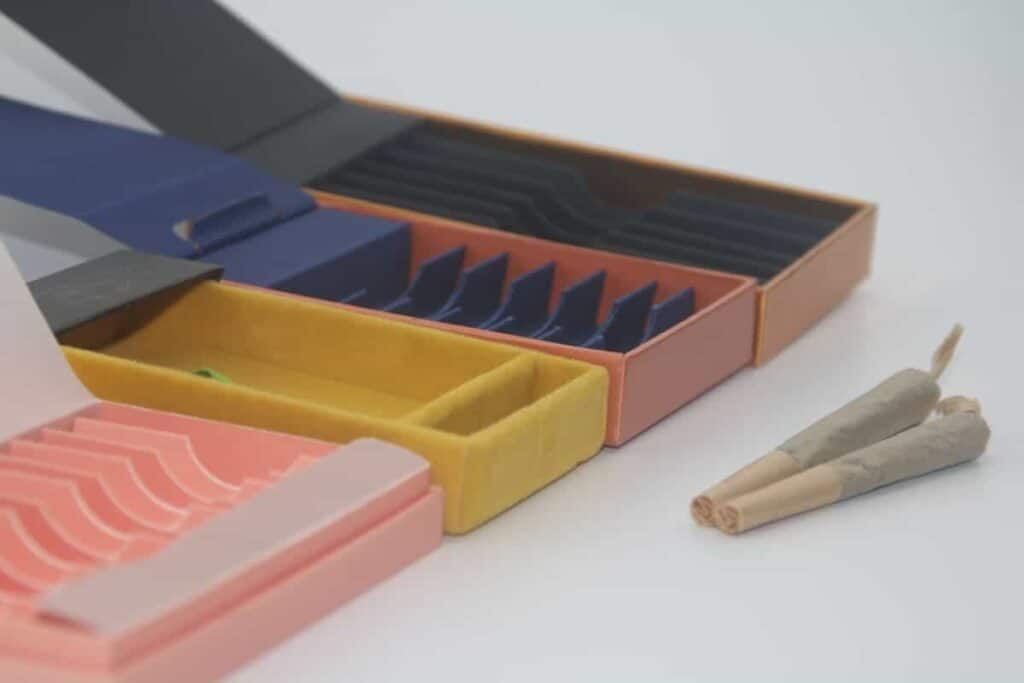The marijuana industry is snowballing across the United States and the world. This increased access to marijuana is potentially dangerous to children who may inadvertently come into contact with the product.
As more states pass legislation to decriminalize and even legalize the recreational use of marijuana, there is a heightened need for improved safety measures, especially regarding packaging.
In an effort to protect children from the potential dangers of marijuana, the cannabis industry should embrace the use of child-resistant packaging for marijuana products. Child-resistant packaging for marijuana is designed to be difficult for children to open but easy for adults to access.
The challenge here is that marijuana products can look very similar to safe items for children to consume. As such, manufacturers must ensure their products are packaged to prevent children from accessing them.
This article examines the current regulations and guidelines for child-resistant packaging for marijuana products and some benefits of creating effective packages that protect children from harm.
What Is Child-Resistant Packaging for Marijuana?

Marijuana packaging must be child-resistant in order to be compliant with state laws. Child-resistant packaging (CRP) is designed to be significantly difficult for children under five years old to open or obtain contents. However, adult consumers should still be able to easily open the packaging.
Some common CRP materials used for marijuana packaging include blister packs, push-and-turn bottles, and screw-top containers.
In addition to being child-resistant, marijuana packaging must also be tamper-evident. This means that the package must show some form of evidence or indication if it has been opened or tampered with. This is important because it helps ensure that the product inside the package is safe to consume.
Some tamper-evident features often used on marijuana packages include tear strips, safety seals, and shrink bands.
Benefits of Child-Resistant Packaging

Child-resistant packaging has become increasingly important in the marijuana industry, as it offers several distinct benefits. Not only does it help to protect children, but it also can reduce the risk of product tampering, increase consumer confidence, and even help reduce waste.
This type of packaging is widely used for marijuana products, including edibles, tinctures, concentrates, and raw plant materials.
When marijuana products are placed in child-resistant packaging, they are significantly more difficult for children to access. This is especially true if the packaging is resistant to being opened and if the child is unable to break through the packaging.
Also, if the product is in child-resistant packaging, it is more difficult for children to ingest or inhale it. When children are able to open the packaging, they may also be able to open the product and ingest or inhale the contents. This can pose a severe risk to both the children and the adults who are responsible for them.
There are several potential benefits of using child-resistant packaging in the marijuana industry.
First, it provides an effective way to reduce the risk of accidental ingestion or inhalation by children.
Second, it can help reduce the risk of product tampering. If a child can break open the packaging, they may be able to get their hands on the product.
Third, it can help protect the environment. Child-resistant packaging is not only effective at preventing children from accessing the product, but it can also reduce the amount of plastic waste generated by its sale.
The Need for Child-Resistant Packaging in the Marijuana Industry

Child-resistant packaging is designed to make it challenging for children to open a container. It is an important safety measure for any industry that deals with products that could be harmful if ingested by a child.
The marijuana industry is no exception. In fact, given the potential for serious health effects from marijuana ingestion, child-resistant packaging is even more critical in this industry than in others.
Public opinion on marijuana use remains mixed, with many people still expressing negative thoughts toward the use of the drug. There is still a great deal of misinformation about marijuana; unfortunately, this misinformation can lead to many dangers for children.
There are a number of different child-resistant packaging marijuana options available, and the best one for a particular cannabis product will depend on the particular product and how it is being used. However, all child-resistant packaging must meet specific safety standards to be effective.
The use of child-resistant packaging is one of the most crucial safety measures that the marijuana industry can take to protect children, and by ensuring that cannabis products are appropriately packaged, the industry can help to prevent accidental ingestions and keep children safe.
Regulations on Child-Resistant Packaging in the Marijuana Industry

There are many different regulations on child-resistant packaging in the marijuana industry. While Some states require that all cannabis products be sold in child-resistant packaging, others only need it for certain products like edibles. Child-resistant packaging for marijuana is designed to be difficult for children to open and is often required by law for poisonous or otherwise harmful products.
The Food and Drug Administration generally regulates the use of child-resistant packaging in the marijuana industry. The FDA requires manufacturers of marijuana products to use child-resistant packaging.
This packaging must be resistant to breaking open and must prevent entry by children under five years of age. The packaging may be similar to a bottle with a child-proof cap or a container with a tamper-proof seal. Once the FDA has approved a manufacturer’s child-resistant packaging, it can be used by other companies in the marijuana industry.
How Child-Resistant Packaging Protects Children

In order to access marijuana products in a traditional format, children must be able to break open the child-resistant packaging. Child-resistant packaging in marijuana can help to prevent harmful ingestion in children by making it more difficult for them to access the contents of the package.
While child-resistant packaging can prevent children from opening the packaging, it does not necessarily stop the children from accessing the product. When adult marijuana users have child-resistant packaging, they are generally able to open the packaging with a simple item such as a key or coin, but there are many hazards associated with this type of access. It may pose a risk of ingestion or inhalation to the user as well as a risk of drug diversion.
Finally, child-resistant packaging should be tamper-evident, making it difficult to open the packaging without damaging it. This can help deter children from opening the packaging, as they will know that they will not be able to do so without damaging the product.
How Companies Can Implement Child-Resistant Packaging

With increased access to marijuana products, children have an increased risk of accidental ingestion or inhalation. Child-resistant packaging can help protect children from accessing products and posing a threat to their health and safety.
Marijuana companies that are interested in protecting children from accessing their products can consider implementing child-resistant packaging. There are a number of ways that companies can implement child-resistant packaging in order to help keep children safe from potentially harmful products.
One way is to use packaging that is difficult for children to open, such as packages that require a certain amount of pressure or force to open.
Another way is to use packaging that is not easily accessible to children, such as packages that are high up on shelves or that are behind locked doors.
Companies should also consider implementing other safety measures, such as testing the strength of their products and having a responsible age limit for product sales.
Finally, companies should use warning labels and other forms of communication to make parents and guardians aware of the potential dangers of certain products and how to keep children safe from them.
Conclusion
Child-resistant packaging in marijuana products plays a vital role in protecting children from accidental ingestions and inhalations of harmful substances. The packaging must be resistant to breaking open and must prevent entry by children under five years of age.
Cannabis manufacturers must use child-resistant packaging when selling marijuana products. The packaging may be in the form of a bottle with a child-proof cap or a container with a tamper-proof container.
Once the FDA has approved a manufacturer’s child-resistant packaging, other companies in the marijuana industry can use it too. The effectiveness of these types of packaging is increased when they are used in conjunction with other safety measures, such as testing the strength of the products and having a responsible age limit for product sales.
